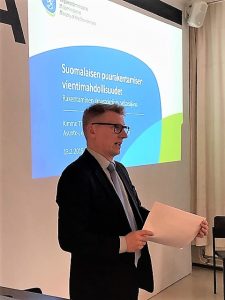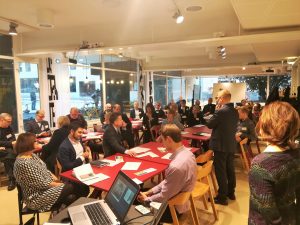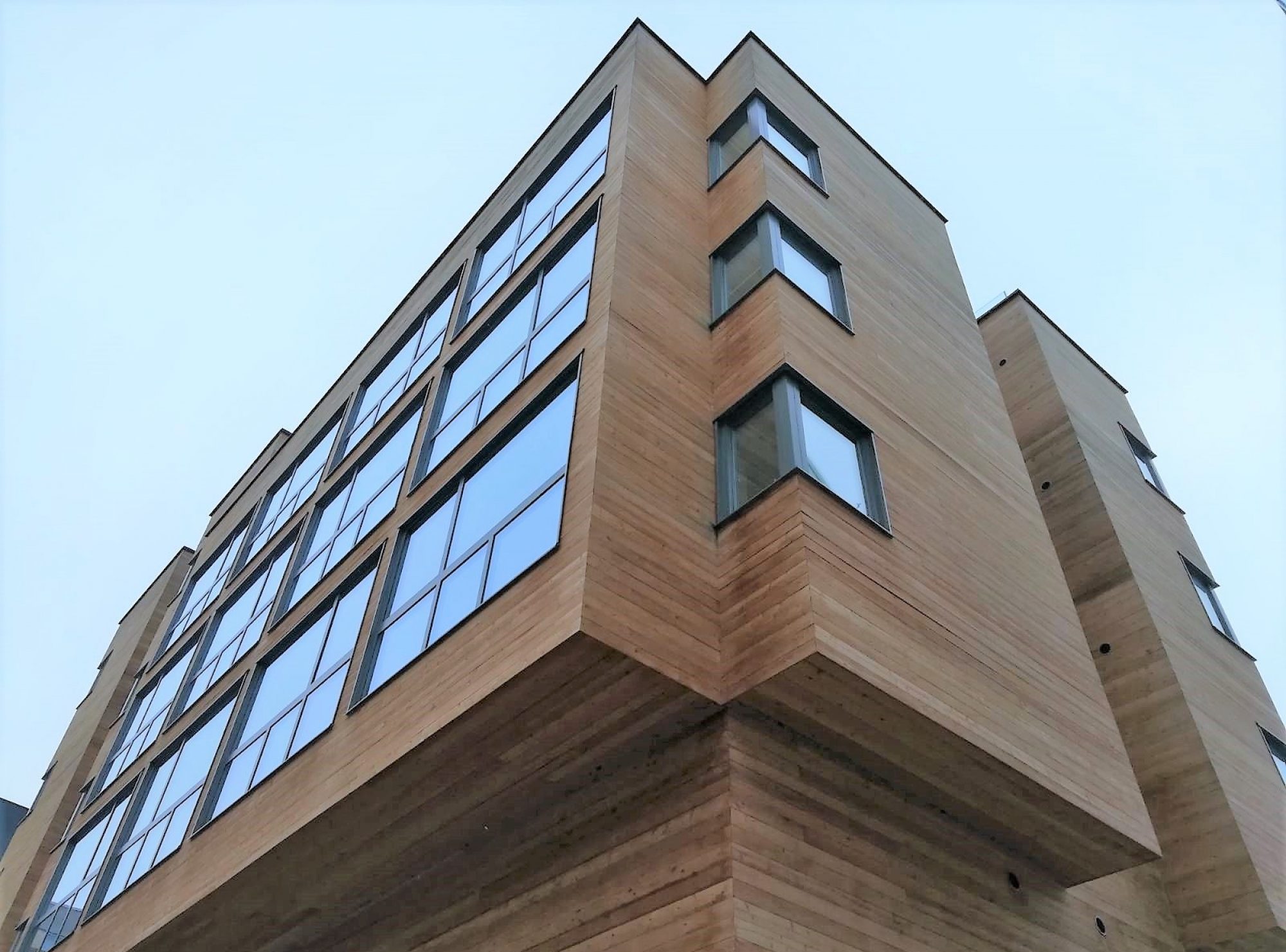Global megatrends, such as climate change, urbanization and environmental degradation, have increased the need to develop and scale up green or sustainable building globally, especially in the cities. These trends are associated with growing opportunities and potentially higher demand for wood construction solutions and other products that are based on renewable materials and low-carbon technologies. On Wednesday, the 13th of February, around 35 experts of industrial wood construction from the Finnish public and private sector organizations gathered in a workshop at University of Helsinki. The workshop was organized by the Wood Vision 2025-project, with the aim to paint the ideal image of industrial wood construction-related exports from Finland in 2030 and identify the steps needed to reach the settled goal. In his opening speech, the Minister of the Environment, Energy and Housing Kimmo Tiilikainen stressed the potential of wood construction as a means to tackle the climate change challenge by providing low-carbon building solutions for the growing urban populations in Finland, and globally.


In the ideal future situation, which type of objects or entities from the industrial wood construction value chain will be exported from Finland in 2030? Which will be the most important application type of these products, projects and/or services? Where will we be exporting them? In the workshop, the Wood Vision 2025-project team challenged the experts to think about these questions and the steps needed to occur between the present and the ideal future situation in 2030 in groups, using the back-casting method. The main results of the workshop and the more general discussions in the seminar are shortly considered in this post.
The suggestion of raising the added value of the exported wood construction products, especially by increasing the share of so-called engineered wood products such as LVL and CLT, and entire building project/solutions, gained prominence in this future vision. In addition, hybrid construction was highlighted as an important area to focus on in many speeches and discussions. One of the key messages related to hybrid construction was its ability to increase the public awareness of the benefits of using wood in construction. In addition, it will help to gradually reduce or remove the juxtaposition of cement and wood. Various types of care and service sector buildings, including kindergartens, schools, hospital and so on, were seen as having the highest potential as export targets, not forgetting wooden multi-storey houses, by 2030. Geographically, Asia, especially China, and our neighbouring markets, including the Nordics, were mentioned by many as the most promising market areas.

One of the key messages from the participants was that there is a need to increase co-operation and knowledge sharing between the companies, education and research organisations in the industrial wood construction field. This could be done, for instance, by creating and using new digital or other kinds of co-operation platforms. Moreover, creating opportunities for novel collaboration between companies from different sectors, with complementary products or services, would be important. For instance, the export of wooden schools or kindergartens together with school concepts, might offer interesting opportunities for Finnish companies in the future.
In the workshop, education was strongly emphasized as one of the areas that needs more resources to enable the growth of industrial wood construction. There is a need to invest in the education on both wood products and wood construction. Raising the attractiveness of the field and increasing the knowledge base among the new generation would also support the growth of trade and export opportunities. In addition to education, marketing would also require additional resources to help the Finnish products and solutions to reach better domestic and international markets.
Finally, customer orientation and flexibility in production were identified as important issues. Flexibility in production gives the possibility to produce products or services with different standards, thus meeting the requirements of various geographic areas and markets. Also, the firms operating in the industrial wood construction value chain should improve their customer orientation and start to better cater to the customers, and their needs. A key message from the workshop was that all the actors involved in the business, research, and development of this field, and related sectors need to work together and establish partnerships by sharing ideas and knowledge. These partnerships will help to build a more sustainable world, based on advanced technology and innovative, low-carbon solutions.

The outcomes of the workshop will feed into a Master’s thesis project of Ms. Anna Lilja (Dept. of Forest Sciences), and other research conducted in the Wood Vision 2025-project on the prospects of WMC and wood construction related exports. The final results of the project, including the analysis on the workshop outcomes, will be presented in the final seminar planned for autumn 2019.
Published 26.2.2019
By Anna Lilja & Heini Vihemäki (project researchers)
